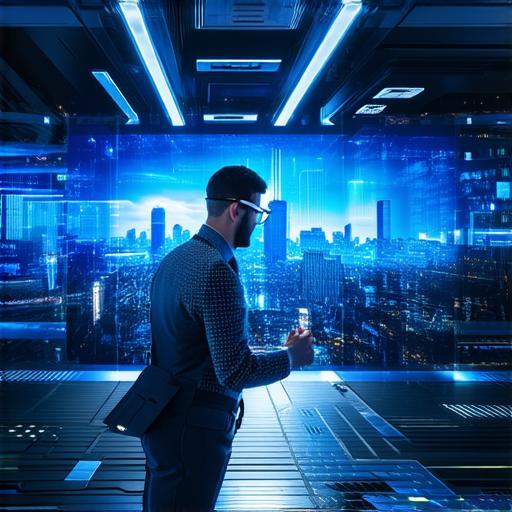Augmented Reality (AR) Technology and Business Operations
Augmented reality (AR) technology is becoming increasingly popular among businesses looking to enhance their operations and improve customer experiences. AR allows for the overlay of digital information onto the physical world, creating a more interactive and engaging experience for customers and employees alike.
What is Augmented Reality?
AR technology involves superimposing digital information onto the physical world using a device such as a smartphone or tablet. This digital information can include graphics, animations, and interactive elements, creating an immersive experience for users. AR has been around for several decades but has only become mainstream in recent years with the widespread adoption of mobile devices and advancements in computer vision technology.
How Augmented Reality is Changing Business Operations

Enhanced Product Visualization
AR allows businesses to provide customers with a more interactive and immersive product visualization experience. For example, IKEA’s AR app allows customers to see how furniture would look in their home before making a purchase. Similarly, Lowe’s AR app allows customers to visualize how paint would look on their walls.
Improved Training and Education
AR technology can also be used for training and education purposes. For example, the medical industry is using AR to train surgeons and medical students. By overlaying digital information onto a patient’s body, AR allows doctors to visualize the patient’s internal organs and plan surgeries more accurately.
Enhanced Customer Experience
AR technology can also enhance the customer experience by creating more engaging and interactive experiences. For example, Coca-Cola’s AR app allows customers to create their own custom Coke bottles with their names and messages. Similarly, Nike’s AR app allows customers to try on virtual shoes and see how they would look on their feet before making a purchase.
Increased Efficiency and Productivity
AR technology can also increase efficiency and productivity by providing real-time information to employees. For example, Amazon’s warehouse uses AR to help workers locate products more efficiently. By overlaying digital information onto the warehouse environment, AR allows workers to find products more quickly and accurately, reducing the time spent searching for items.
Real-Life Examples of Augmented Reality in Business
IKEA’s AR App
IKEA’s AR app is a great example of how AR technology can enhance the customer experience. The app allows customers to see how furniture would look in their home before making a purchase. By overlaying digital information onto the physical world, IKEA’s app provides a more realistic and engaging way for customers to make informed decisions about their purchases.
Coca-Cola’s AR App
Coca-Cola’s AR app is another great example of how AR technology can enhance the customer experience. The app allows customers to create their own custom Coke bottles with their names and messages. By overlaying digital information onto the physical world, Coca-Cola’s app provides a more personalized and engaging way for customers to interact with the brand.
Amazon’s Warehouse
Amazon’s warehouse uses AR technology to help workers locate products more efficiently. By overlaying digital information onto the warehouse environment, AR allows workers to find products more quickly and accurately, reducing the time spent searching for items. This increased efficiency and productivity can lead to cost savings for the company.
The Future of Augmented Reality in Business
AR technology is still in its early stages and will continue to evolve in the coming years. As more businesses adopt this technology, we can expect to see even more innovative uses of AR in business operations. For example, we may see AR being used for remote collaboration, allowing employees to work together in real-time regardless of their location. We may also see AR being used for predictive maintenance, allowing companies to identify potential problems before they occur.
Summary
AR technology is becoming increasingly popular among businesses looking to enhance their operations and improve customer experiences. By providing a more interactive and immersive experience, AR can help businesses stand out from the competition and provide a better overall customer experience. As this technology continues to evolve, we can expect to see even more innovative uses of AR in business operations.